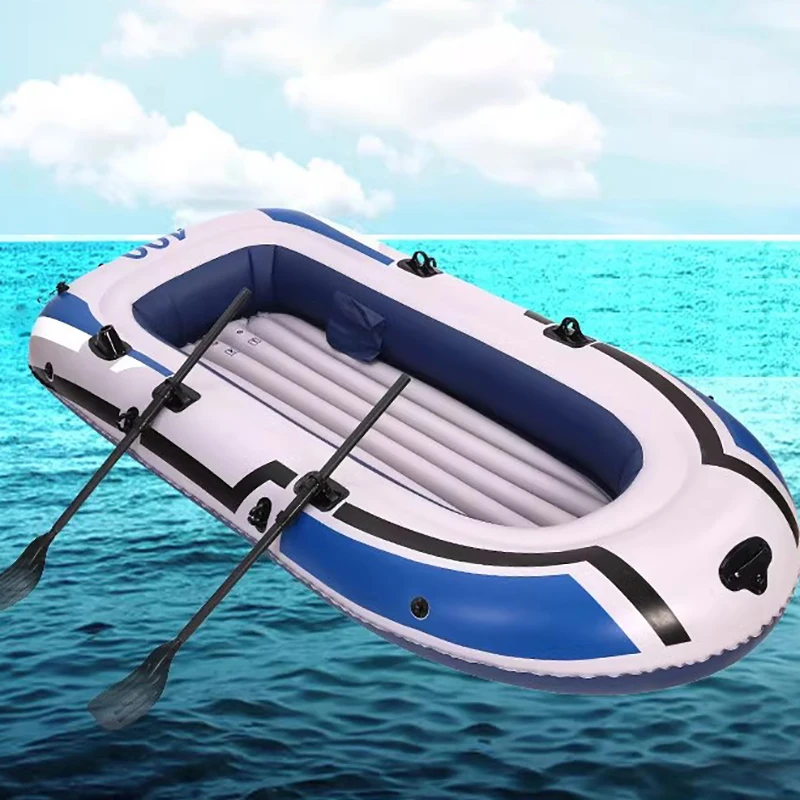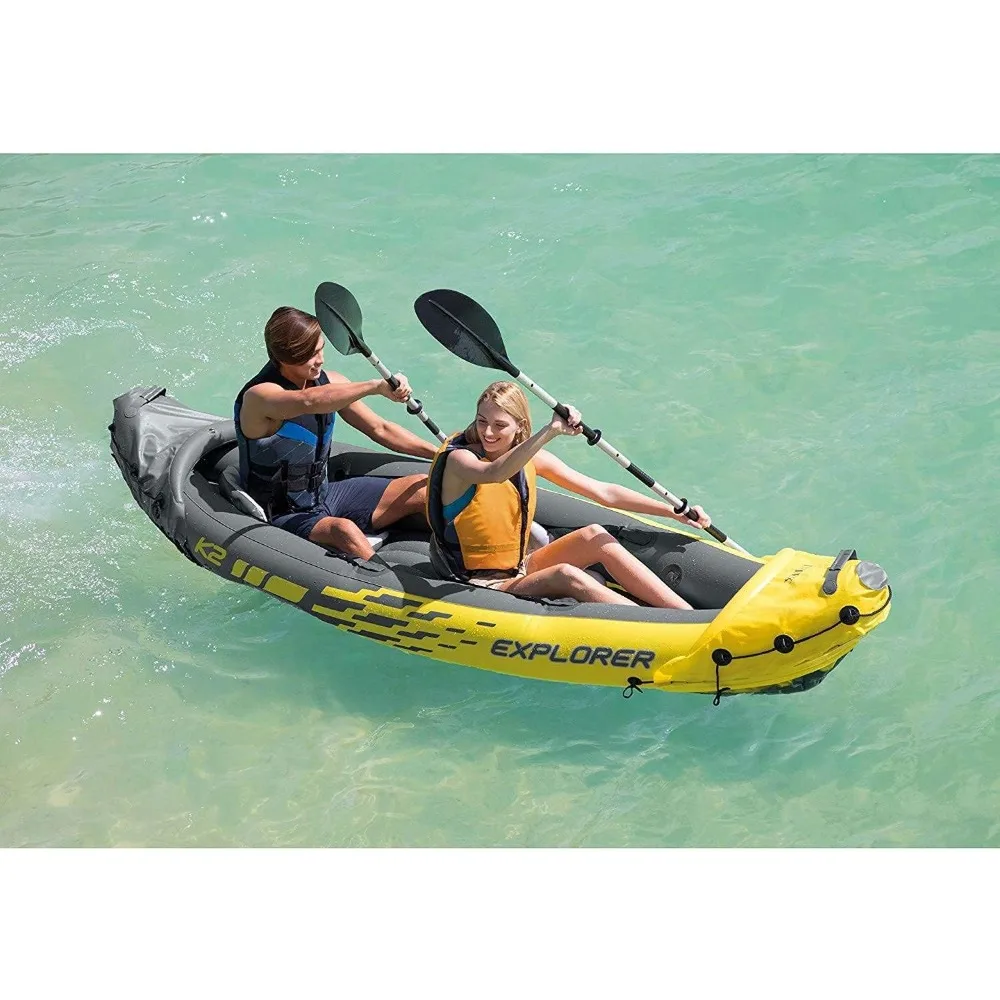Is kayaking a good exercise? Amidst the hustle and bustle of modern life, the allure of the great outdoors and the pursuit of physical fitness often converge, creating a harmonious union that captivates the hearts of adventurous individuals. At the forefront of this convergence lies the art of kayaking – a water-bound activity that not only offers a serene escape from the stresses of daily life but also provides an exceptional full-body workout that can elevate your overall health and well-being.
As the popularity of kayaking continues to soar, fitness enthusiasts and outdoor adventurers alike are discovering the transformative power of this versatile activity. From improved cardiovascular health to enhanced muscle strength and flexibility, the benefits of kayaking as a form of exercise are undeniable. In this comprehensive guide, we’ll delve into the myriad ways in which kayaking can serve as a potent tool in your fitness arsenal, empowering you to embrace this captivating sport and unlock new levels of physical prowess.

Cardiovascular Benefits of Kayaking
At the heart of kayaking’s fitness prowess lies its ability to deliver a robust cardiovascular workout, engaging the body’s major muscle groups and elevating your heart rate for sustained periods.
Aerobic Exercise for a Healthy Heart
Kayaking is a predominantly aerobic activity, requiring the consistent use of your upper body, core, and leg muscles to propel the kayak through the water. This sustained effort translates into an excellent cardiovascular workout, strengthening your heart and improving your overall aerobic fitness.
Calorie-Burning Potential
Depending on your intensity level, kayaking can be a highly effective calorie-burning exercise, with the potential to burn anywhere from 300 to 500 calories per hour, making it a valuable tool in weight management and overall fitness.

Improved Endurance and Stamina
Regular kayaking can enhance your endurance and stamina, as the repetitive motions and sustained effort required to navigate the waters gradually build your cardiovascular capacity, allowing you to tackle longer paddling sessions with greater ease.
Muscular Strength and Flexibility Benefits
In addition to its cardiovascular benefits, kayaking also offers a comprehensive strength-building and flexibility-enhancing workout, targeting a diverse array of muscle groups.
Upper Body Strength
Kayaking primarily engages the muscles of the upper body, including the shoulders, arms, and back, as you use your paddle to propel the kayak forward. This consistent resistance exercise can lead to significant improvements in upper body strength and muscle tone.
Core Engagement
Maintaining proper form and balance while kayaking requires a strong and engaged core, as you utilize your abdominal and back muscles to stabilize your body and transfer power from your torso to the paddle. This core-strengthening component of kayaking can enhance overall stability and posture.

Leg and Lower Body Involvement
While kayaking may seem primarily an upper body exercise, it also engages the leg and lower body muscles, as you use your legs to brace against the kayak and provide additional stability and power.
Improved Flexibility
The repetitive, fluid motions of kayaking, combined with the need to navigate through various water conditions, can gradually improve your overall flexibility, particularly in the shoulders, back, and hips.
Accessibility and Adaptability of Kayaking
One of the standout features of kayaking as a fitness activity is its accessibility and adaptability, making it an inclusive option for individuals of diverse ages, abilities, and fitness levels.
Suitable for All Ages
Kayaking can be enjoyed by individuals of all ages, from young children to seniors, as it can be tailored to accommodate various skill levels and physical capabilities, ensuring a safe and enjoyable experience for everyone.
Adaptable for Different Fitness Levels
Whether you’re a seasoned athlete or a fitness newcomer, kayaking can be adjusted to match your current physical abilities and fitness goals, allowing you to progress at your own pace and gradually challenge yourself.
Versatile for Various Water Environments
Kayaking can be enjoyed in a wide range of water environments, from calm lakes and rivers to more challenging coastal waters, providing a diverse array of settings to explore and a multitude of fitness challenges to overcome.
Incorporating Kayaking into Your Fitness Routine
To fully harness the fitness benefits of kayaking, it’s essential to thoughtfully integrate it into your overall exercise regimen, ensuring a balanced and well-rounded approach to your physical well-being.
Frequency and Duration
Determine the optimal frequency and duration of your kayaking sessions based on your fitness goals, existing exercise routine, and current physical condition. Aim for a cadence that allows you to gradually increase the intensity and duration of your paddling over time.
Cross-Training Considerations
Complement your kayaking workouts with other forms of exercise, such as strength training, cardiovascular activities, and flexibility-focused routines, to create a comprehensive fitness program that addresses all aspects of physical health.
Proper Technique and Equipment
Invest in proper kayaking technique and safety equipment to ensure a safe and effective workout, minimizing the risk of injury and maximizing the benefits of your time on the water.
Is Paddling Good Exercise?
Kayaking isn’t just about exploring serene waters; it’s also a fantastic workout for both body and mind. Paddling engages a variety of muscle groups, particularly in the arms, shoulders, and back, as you navigate through the water. The repetitive motion of paddling strengthens these muscles, promoting muscle endurance and toning.
Beyond upper body strength, kayaking also provides a low-impact cardiovascular workout. Paddling against water resistance elevates your heart rate, improving cardiovascular health and stamina over time. This makes it an excellent option for those looking to improve their fitness without high-impact activities that strain joints.
Moreover, kayaking offers mental health benefits by allowing participants to disconnect from daily stresses and immerse themselves in nature. It promotes mindfulness and relaxation, contributing to overall well-being.
Whether you’re paddling along a tranquil lake or navigating gentle rapids, kayaking offers a holistic exercise experience that combines physical fitness with mental rejuvenation. So, next time you’re considering a new workout routine, consider taking to the water for a refreshing and effective fitness session.\
Kayaking for Core Strength and Balance
In addition to the evident upper body engagement, kayaking significantly contributes to core strength and stability. As you paddle, your abdominal and back muscles work tirelessly to maintain balance and control the boat’s movements. This constant engagement helps strengthen your core, which is essential for overall body stability and posture.
Furthermore, the dynamic nature of kayaking requires subtle adjustments and shifts in body weight to navigate varying water conditions. These movements enhance not only your core strength but also your sense of balance and coordination. Regular kayaking can, therefore, improve your ability to balance in everyday life and in other sports or physical activities.
A Full-Body Workout in Disguise
While the arms, shoulders, back, and core receive the most attention during kayaking, it’s important to note that this activity is truly a full-body workout. Your legs and glutes play a crucial role in stabilizing your lower body and transferring power from your paddle strokes into forward momentum. By bracing your feet against the footrests and actively using your lower body, you create a solid foundation that maximizes your paddling efficiency and sneakily works out your lower body muscles.
Calorie Burning and Weight Management
Kayaking can be an efficient way to burn calories, with the number varying depending on factors like intensity, duration, and water conditions. On average, a leisurely paddle can burn around 200-300 calories per hour, while more vigorous paddling or navigating rougher waters can escalate this to upwards of 500 calories per hour. Incorporating kayaking into your fitness regimen can aid in weight loss and weight management goals, all while enjoying the outdoors.

Conclusion: Unlock the Fitness-Boosting Power of Kayaking
Kayaking is a remarkable and versatile fitness activity that offers a multitude of benefits, from improved cardiovascular health to enhanced muscular strength and flexibility. In 2024, this sport is becoming more and more popular. By embracing the transformative power of this water-bound pursuit, you can unlock new levels of physical prowess, enhance your overall well-being, and embark on a journey of outdoor adventure and personal growth.
Whether you’re a seasoned fitness enthusiast or a newcomer to the world of exercise, kayaking presents an opportunity to diversify your fitness routine, challenge your body in novel ways, and immerse yourself in the serene beauty of nature. By incorporating this captivating activity into your wellness regimen, you’ll not only reap the tangible physical rewards but also experience the profound sense of mental rejuvenation and emotional restoration that comes with connecting with the great outdoors.
As you continue to explore the fitness-boosting potential of kayaking, remember that the true power of this sport lies in its ability to adapt to your unique needs and preferences. By tailoring your kayaking experiences to align with your goals and capabilities, you’ll cultivate a lasting passion for this dynamic form of exercise, empowering you to paddle your way to a healthier, more active lifestyle.
